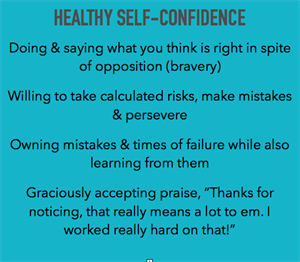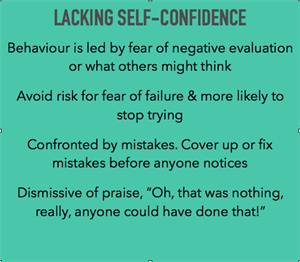
We’re off to see Gal Gadot in the Wonder Woman movie tonight! I think she’s confidently nailed the role and I’m quietly excited to see the first-ever movie adaptation. However, I will always hold an affinity for the iconic Lynda Carter … and as for Superman, well I’m simply a huge fan! The reason for picking the superhero power pose picture will make more sense if you watch the Ted Talk included at the end of this piece.
I recently put together a couple of worksheets for clients who are specifically aiming to increase their self-confidence. They found the content useful and started sharing it with others, so here I am doing similar.
So what is self-confidence? Simply put, self-confidence is all about believing in your self and your abilities. It’s also considered a major source of motivation, or lack thereof, and also influences our behaviour (e.g., head up with eye contact and strong voice in comparison to the opposite).
Personal expectations matter … a lot! Answers to the following questions make a huge difference to our felt sense of confidence: How will I perform? What if I screw up? Am I good enough? Can I do this? What will they think of me?
Whether it’s a boss who only focuses on “areas for improvement”, or the group of select audience members who seem completely bored with your presentation, or the repeated “we’ll keep your application on file” interview result … life happens and our confidence can get a thrashing from time to time. Each challenge is only a moment in time or simply a chapter in our story from which valuable lessons can be learned.
We don’t have to be super-human to have self-confidence. However, building and maintaining healthy levels of self-confidence does require proactive effort and regular practice. How will you write the next chapter and how will the continued story of building confidence unfold?
Below are a few ideas on what healthy self-confidence looks like. Also some concepts drawn from the scientific literature offer tips on how to build on self-confidence.





4 Tips on Building Self-Confidence
1) Directional Focus
In this instance, looking backward rather than forward is helpful. Why? Looking ahead to what you want and don’t yet have, while comparing yourself to others who have what you want, can be a confidence drain. Instead, look back and notice how far you’ve come. Remind yourself of past achievements, no matter how small! Acknowledge where self-confidence helped you and others succeed. Consider doing a stocktake of sorts by writing down all those achievements. Then consider what combination of your strengths aided past success. Finally, explore how such strengths could best serve your current goals.
2) Self-Compassion
An important and worthwhile skill to develop. Self-compassion challenges and limits engagement with negative self-talk. Learning how to be more compassionate with self is also associated with greater resilience, improved performance after setbacks, and overall improved wellbeing. Ultimately, such benefits would aid in building self-confidence. The work of Dr Kristin Neff is well worth exploring here (info in resource list found at the end).
3) Positive Visualisation
In brief, such an exercise encourages you to close your eyes and relax into your body and physical space. Once connected to a sense of calm, visualise yourself doing all that’s required to do well. For example, focusing on positive visualisation, how will you best prepare for the job interview? How will you enter the interview space and present yourself? How will you effectively manage challenging questions? Visualise yourself do such to the best of your ability. This is about trusting in yourself and your ability. Notice how you feel in yourself when proactively connecting to a positive visualisation in comparison to passively e ngaging with the catastrophic images and thoughts your mind presents you. The resource list at the end has two article links on visualisation that are worthwhile reads.
4) Posturing: A superhero’s pose does what?
The more obvious take home message is that our posture reflects either a level of confidence or insecurity. Less obvious is that our posture communicates information to our brain about how we feel in the moment. To feel more confident and help the brain connect to a felt sense of confidence, it is important to stand tall or sit up straight, and when appropriate, put a smile on your dial!
Here’s a great TED Talk by Amy Cuddy who explains the science behind a power pose. So, strike a pose, there’s nothing to it!
Okay, hope you got something from looking through this.
As always, take care and keep smiling!
Resource List
Adams, A. J. (2009) Seeing is Believing: The Power of Visualization. Psychology Today.
Bandura, A. (1986). The explanatory and predictive scope of self-efficacy theory. Journal of social and clinical psychology, 4 (3), 359-373.
Lenney, E. (1977). Women’s self-confidence in achievement settings. Psychological bulletin , 84 (1)
Neff, K. (2011). Self-compassion: Stop beating yourself up and leave insecurity behind. New York, NY: William Morrow.
– Also: Dr Neff’s Website click here
Niles, F. (2011). How to Use Visualization to Achieve Your Goals. The Huffington Post.
“Optimism is the faith that leads to achievement. Nothing can be done without hope and confidence.”
Helen Keller

